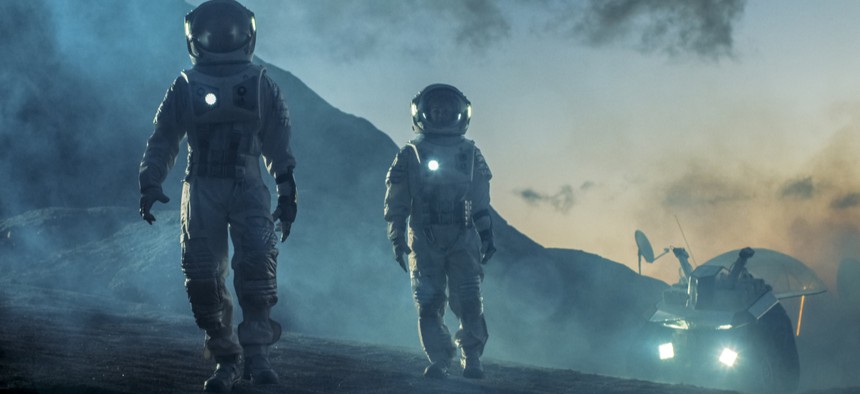NASA Wants to Know If Space Travel Affects Plant and Animal Evolution

Gorodenkoff/Shutterstock.com
The agency is laying the groundwork for long-term human missions to the Moon, Mars and beyond.
Matt Damon already proved potatoes can survive on Mars, but NASA now wants to figure out how spaceflight and changing gravity patterns impact the way other plants and animals grow and develop.
The space agency began accepting proposals for a number of different projects under its space biology research program, a broad initiative aimed at investigating how short- and long-term spaceflights affect the internal processes of cells, microorganisms, plants and animals. Projects will also focus on how space environments affect reproduction and evolution over multiple generations.
“Space biology science enables NASA to achieve the goals of fundamental and translational biology research in space that is critical to the Agency’s exploration and space commercialization missions,” officials wrote in the research announcement.
The program comes as NASA begins laying the groundwork for long-term human missions to the Moon, Mars and beyond.
President Trump in December signed Space Policy Directive 1, a measure that calls on NASA to reinvigorate its space exploration efforts and work with international and commercial organizations to “enable human expansion across the solar system.” NASA officials said the agency could begin launching missions to the moon as early as next year.
We likely won’t see astronauts growing crops or raising livestock on those early missions, but space biology research could unlock the secrets to sustaining life during months- or even years-long expeditions in the decades ahead.
While scientists already have a basic understanding of how the human body reacts the rigors of spaceflight, the program looks to explore how low-gravity environments affect tissue growth and cellular functions, as well as the long-term development of plants and animals. NASA posed a number of potential research questions, including whether spaceflight impacts animals’ behavior and aging, and what strategies could allow for sustainable crop growth in space.
Another critical topic is whether changing gravity levels affect the way animals reproduce over multiple generations. Understanding how space affects the way embryos develop and species’ genes change over time could prove critical when planning long-term missions or designing space colonies.
Projects are eligible for between $100,000 and $1 million in funding from NASA. Proposals for the first wave of research projects are due August 17.



